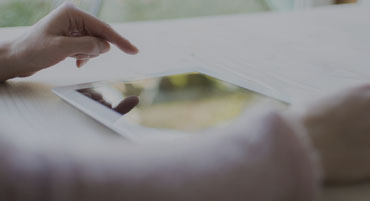Overactive Bladder (OAB) is a syndrome that is characterized by sudden urges to urinate that are difficult to postpone. This commonly also results in frequent trips to the bathroom (both day and night) and may even cause some patients to leak urine.
Overactive Bladder (OAB) affects millions of men and women of all ages. There is no “typical” person with OAB and so there is no one treatment for this syndrome that is right for all patients. Proper therapy for OAB means tailoring the treatment to the patient not the patient to the treatment. Today, we discuss some of the various therapies that can be used to treat OAB.
Behavioral Modifications
These should be the first choice in treating overactive bladder and can be undertaken on your own, before you even see a provider. A bladder diary may help you see patterns that may explain your symptoms, such as drinking a lot of fluids at night. It may be helpful to identify and then reduce or eliminate foods or beverages that may be irritating to your bladder. Some of these possible irritants include caffeinated drinks, carbonated drinks, acidic foods (tomatoes, citrus fruits and juices), spicy foods, artificial sweeteners or dyes. Reducing the total fluid intake may improve symptoms for some people. This is best done after reviewing your bladder diary, because excessive fluid intake is not the cause of OAB symptoms for most people. Timed voiding involves urinating on a set schedule (for instance, every two hours) which can then be gradually increased to train the bladder. Finally, pelvic floor exercises can help to control urinary leakage associated with OAB.
Medications
Medications (such as VESIcare, Toviaz, Myrbetriq, etc) are often prescribed for patients who are not improved enough with behavioral changes, though it is not necessarily wrong to try both medications and behavioral changes as initial therapy. Medication therapy will be more effective if combined with behavioral changes as above. Medications can be very effective but may have side effects in some people. In addition, some people with certain diseases (such as glaucoma) or who are taking medications (such as potassium supplements) may have to be cautious with some OAB medications. This is why these should be used only after consulting a care provider familiar with treating OAB.
Percutaneous Tibial Nerve Stimulation (PTNS)
PTNS (Urgent PC) is a form of neuromodulation. In neuromodulation, we use tiny electrical signals to change the way the bladder sends signals to the brain that it is full and even how the brain responds to that message. In PTNS, that signal is sent via a very small needle placed under the skin near the ankle. There is a branch of the nerve to the bladder located there and stimulating this nerve can significantly improve the urinary frequency, urgency and urgency incontinence that occurs with OAB. There are few complications or risks, other than mild irritation at the site of needle placement, so this may be a good option for patients who are not able to undergo any type of surgical therapy for their OAB. The treatment takes place in the office and is usually administered once a week (it takes about 40 minutes) for 12 weeks and then about every 4 weeks thereafter (to maintain the effect).
Sacral Neuromodulation
Another type of neuromodulation stimulates the nerve to the bladder further up the nerve. Again, tiny electrical signals change the way that the bladder and brain communicate. However, in sacral neuromodulation, (Interstim) we are able to place a small wire beneath the skin just above the buttocks. Because the wire is underneath the skin, there is no need to come into the office for treatment. The wire is placed in the operating room under sedation (much like a pacemaker for the heart), so patients should be able to tolerate minor surgery. Also, this type of treatment is appropriate for those patients with moderate or severe symptoms who have not improved on multiple medications or are unable to take medications (because of side effects, for instance). This type of treatment should also be performed by specialists with knowledge and training in how to properly place the wire.
Botulinum Toxin
For some patients, it may be appropriate to use botulinum toxin (Botox) to help to treat OAB symptoms which do not respond to medications and behavioral changes. Small doses of botulinum toxin (Botox) are injected into the wall of the bladder through a small scope. This may be done in the office (though I find that most of my patients prefer this done in the operating room with some sedation). This will typically need to be repeated after 6-9 months to maintain its effectiveness. In some patients, botulinum toxin may make it difficult to empty the bladder completely, something that is very important to discuss before treatment.
Conclusion
Patients with OAB are very diverse often have different symptoms, lifestyles, or other medical problems. An ideal approach to OAB involves finding the best treatment (or even treatments) for that individual patient instead of treating all patients as if they were the same.
At The Overactive Bladder Clinic a part of UT Erlanger Urology in Chattanooga, Tennessee, we specialize in the evaluation and treatment of all forms of urinary incontinence. For more information, contact us at 423-778-4OAB (4622).
-Colin M. Goudelocke MD, FPMRS
 A recent review article by Palma and Staak provides an overview of the most recent studies about the effects of caffeine on the bladder. When taken together, these studies demonstrate that drinking more than 2 cups of coffee per day (>200mg caffeine) is associated with worsening symptoms of overactive bladder. The effect does depend on the dose and more than 4 cups of coffee per day may result in developing symptoms of OAB even in patients with no symptoms before.
A recent review article by Palma and Staak provides an overview of the most recent studies about the effects of caffeine on the bladder. When taken together, these studies demonstrate that drinking more than 2 cups of coffee per day (>200mg caffeine) is associated with worsening symptoms of overactive bladder. The effect does depend on the dose and more than 4 cups of coffee per day may result in developing symptoms of OAB even in patients with no symptoms before.
